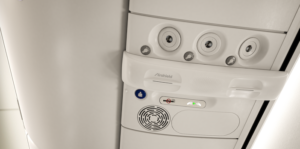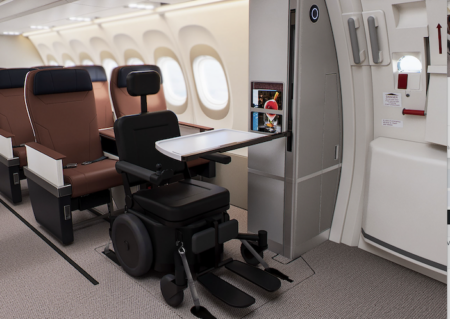Air filtration technology in the aircraft cabin, such as the HEPA filtration within most aircraft today, helps protects air travellers from contagious airborne pathogens. However, while HEPA technology captures airborne viruses and bacteria, it cannot deactivate them, so the risk of infection remains. This has inspired a team of researchers to develop an innovative air cleaner claimed to effectively mitigate airborne pathogens.
The technology, developed at North Carolina State University in the USA, is called FIL-TEX. The system comes in the form of a lightweight, 2mm-thick, knit filter that generates a two-dimensional non-thermal plasma (NTP) as a way of both capturing and deactivating contagious viruses and bacteria without emitting any by-products. The team believe the technology is a viable solution for airplanes of all sizes.
CREM Co Labs, an independent laboratory specialising in testing for the infection prevention and control (IPAC) industry, recently published its assessment of FIL-TEX. The report, authored by virology and microbiology expert, Dr Bahram Zargar, stated that the filter can effectively remove 99.92% of airborne viruses and 99.99% of airborne bacteria, while deactivating 98% of viruses found on the filter’s surface. The testing was carried out using a 26 cubic meter aerobiology chamber.
Improving cabin air quality
An article published in an American Society of Microbiology (ASM) journal stated, “Air transportation is a major vehicle for the rapid spread and dissemination of communicable diseases, and there have been a number of reported outbreaks of serious airborne diseases aboard commercial flights including tuberculosis, severe acute respiratory syndrome, influenza, smallpox and measles, to name a few.”
The team at North Carolina State University do not believe that HEPA filters go far enough in improving aircraft cabin air quality. “Because HEPA filters merely capture pathogens and focus them in one place, the chance that any collected pathogens could be still spread remains. For example, when changing the filter,” stated Dr Frank Scholle, Associate Professor of Biological Sciences.
These factors are prompting the industry to seek out improved solutions. For example, needlepoint bipolar ionisation recently received attention for its lack of efficacy in a study conducted by Boeing. Those tests concluded that “air ionisation has not shown significant disinfection effectiveness.” Furthermore, according to the Centers for Disease Control (CDC), “bipolar ionization has the potential to generate ozone and other potentially harmful by-products indoors.”
The scientists at North Carolina say that FIL-TEX is different as it operates like a magnet that attracts, deactivates and removes unwanted contaminants from the air without emitting any harmful by-products.
Sifting out the science
Plasma – often called the fourth state of matter, alongside solid, liquid, and gas – is often found in very hot environments such as lightning and stars. Non-thermal plasma, on the other hand, generates no heat but produces reactions on a microscopic scale. For example, when airborne pathogens pass through the FIL-TEX filter, they react with a 2D cold plasma field that essentially “zaps” the microorganism, deactivating the virus or destroying the bacterium’s cell wall.

“Filtration of airborne particulates can be divided into two camps – active and passive,” explained Dr Scholle. “This device takes the best performance characteristics from passive technologies, like HEPA, that capture particulates and active technologies, like UVC, that purify air and combine them into a single, thin, lightweight air-cleaning solution.”
FIL-TEX incorporates non-thermal plasma technology with a textile filter that can be made using any yarn: cotton, polyester, polypropylene, Kevlar, and even yarn made from 100% recycled plastic. The design enables air to pass through the system at high rates without a significant power requirement.
Air cleaning test results
While the technology was initially developed to remove smoke and particulates from enclosed spaces such as airplane cabins, virologists at North Carolina State University decided to test the effectiveness of FIL-TEX against respiratory pathogens during the Covid-19 pandemic, and found it to be a highly effective means of collecting and deactivating airborne pathogens.
In the study, an aerosolised common cold coronavirus, similar to the Covid-19 virus, was introduced into an enclosed laboratory-scale tunnel, with FIL-TEX situated between the inlet and outlet. The team say that a sampling of the air before and after passing through FIL-TEX demonstrated the encouraging post-filtration effectiveness of the technology.
“We had nearly a 3-log reduction in infectious virus after the FIL-TEX filter, which equates to a 98% to 99% effectiveness rating,” stated Dr Scholle.
The aforementioned Crem Co Labs test, within the large aerobiology chamber, showed even better results, experiencing a full 3-log reduction in infectious virus. Additionally, in a separate test, the lab recorded a 4-log drop in airborne bacteria.
The FIL-TEX technology is now available from Stitch Partners to be used as a component within a device or system.





